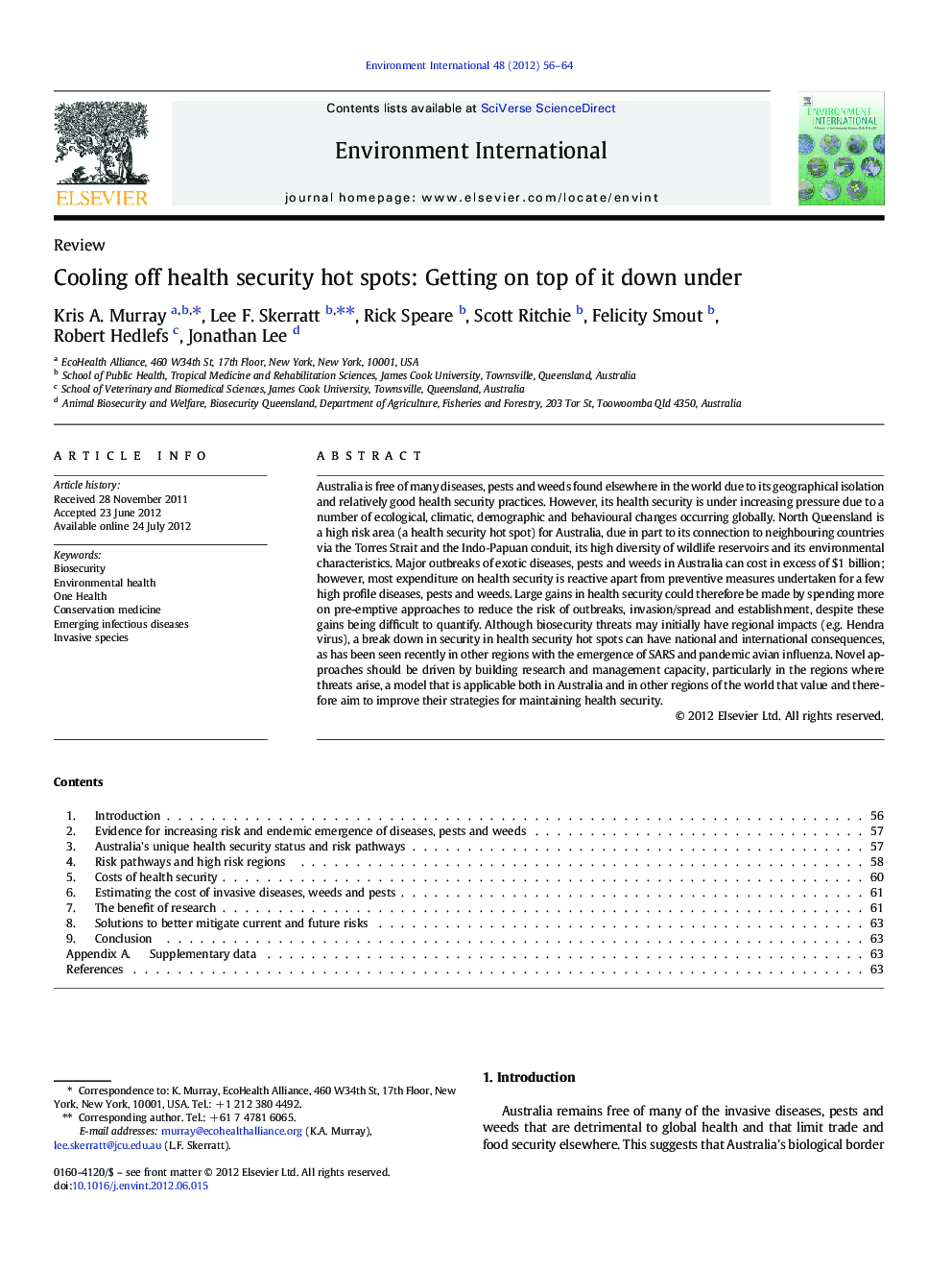| کد مقاله | کد نشریه | سال انتشار | مقاله انگلیسی | نسخه تمام متن |
|---|---|---|---|---|
| 4423018 | 1619079 | 2012 | 9 صفحه PDF | دانلود رایگان |

Australia is free of many diseases, pests and weeds found elsewhere in the world due to its geographical isolation and relatively good health security practices. However, its health security is under increasing pressure due to a number of ecological, climatic, demographic and behavioural changes occurring globally. North Queensland is a high risk area (a health security hot spot) for Australia, due in part to its connection to neighbouring countries via the Torres Strait and the Indo‐Papuan conduit, its high diversity of wildlife reservoirs and its environmental characteristics. Major outbreaks of exotic diseases, pests and weeds in Australia can cost in excess of $1 billion; however, most expenditure on health security is reactive apart from preventive measures undertaken for a few high profile diseases, pests and weeds. Large gains in health security could therefore be made by spending more on pre-emptive approaches to reduce the risk of outbreaks, invasion/spread and establishment, despite these gains being difficult to quantify. Although biosecurity threats may initially have regional impacts (e.g. Hendra virus), a break down in security in health security hot spots can have national and international consequences, as has been seen recently in other regions with the emergence of SARS and pandemic avian influenza. Novel approaches should be driven by building research and management capacity, particularly in the regions where threats arise, a model that is applicable both in Australia and in other regions of the world that value and therefore aim to improve their strategies for maintaining health security.
► Diseases, pests and weeds can incur massive economic, social and environmental costs.
► Ecological, climatic, demographic and behavioural changes may increase the risk of incurring these costs locally and globally.
► Cost-effective reduction of risk requires a concerted shift in investment from mainly reactive to novel pro-active strategies.
► Increased investment in research and management capacity, particularly along high-risk pathways, can deliver in this task.
► A more efficient and collaborative health security system will confer regional, national and international benefits.
Journal: Environment International - Volume 48, 1 November 2012, Pages 56–64